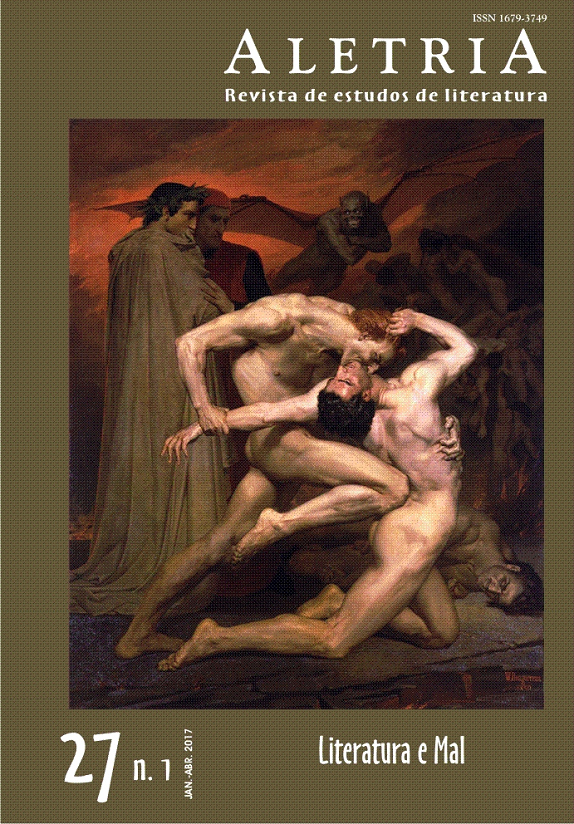Espaço, corpo, trauma: Ruth Klüger e o campo de concentração
DOI :
https://doi.org/10.17851/2317-2096.27.1.143-160Mots-clés :
Shoah, Klüger, trauma, corpoRésumé
Buscamos investigar a presença de figurações do corpo num relato da sobrevivente do Holocausto Ruth Klüger, intitulado Paisagens da memória. A partir da fenomenologia de Merleau-Ponty e das reflexões biopolíticas de Agamben, procuraremos relacionar esse tópico temático com outros tradicionalmente investigados nos estudos sobre a Shoah, como o trauma, por exemplo. Além disso, revelaremos especificidades desse texto, como a menção do corpo pornográfico e do corpo monótono. Esperamos mostrar, assim, como, antes de tudo, o campo de concentração afeta e se perpetua somaticamente.
Téléchargements
Références
AGAMBEN, Giorgio. Homo sacer: o poder soberano e a vida nua. Trad. Henrique Burigo. Belo Horizonte: Ed. UFMG, 2010. v. 1.
AGAMBEN, Giorgio. O que resta de Auschwitz: o arquivo e a testemunha. Trad. Selvino J. Assmann. São Paulo: Boitempo, 2008.
BECKER, Annette. Extermínios – o corpo e os campos de concentração. In: CORBIN, Alain et al. (Org.). História do corpo. Trad. Ephraim Ferreira Alves. Petrópolis: Vozes, 2008. v. 3, p. 417-441.
FOUCAULT, Michel. Utopian body. In: JONES, Caroline A. Sensorium: embodied experience, technology, and contemporary art. Trad. Lucia Allais et al. Cambridge: The MIT Press, 2006. p. 229-234.
FRANKL, Viktor. Em busca de sentido: um psicólogo no campo de concentração. Trad. Walter O. Schupp. Petrópolis: Vozes, 2008.
HEIDEGGER, Martin. Bauen wohnen denken. In: HEIDEGGER, Martin. Gesamtausgabe. Frankfurt am Main: Vittorio Klostermann, 2000. v. 7, p. 147-164.
HOFMANNSTHAL, Hugo von. Das Schriftum als geistiger Raum der Nation. München: Verlag der Bremer Presse, 1927.
KLÜGER, Ruth. Paisagens da memória: autobiografia de uma sobrevivente do Holocausto. Trad. Irene Aron. São Paulo: Ed. 34, 2005.
KLÜGER, Ruth. weiter leben: eine Jugend. München: DTV, 1998.
LAUTMANN, Rüdiger. Körpervermittelte Rechtlosigkeit – die KZ-Haft als Idealtypus. In: REHBERG, Karl-Siegbert (Ed.). Die Natur der Gesellschaft. Frankfurt am Main: Campus Verlag, 2008. p. 1122-1137.
LESSA, Renato. O silêncio e sua representação. In: SCHWEIDSON, Edelyn (Org.). Memória e cinzas: vozes do silêncio. São Paulo: Perspectiva, 2009. p. 83-101.
MERLEAU-PONTY, Maurice. Fenomenologia da percepção. Trad. Carlos Alberto Ribeiro de Moura. São Paulo: WMF Martins Fontes, 2011.
MORAES, Eliane Robert. O corpo impossível: a decomposição da figura humana: de Lautréamont a Bataille. São Paulo: Iluminuras, 2002.
SELIGMANN-SILVA, Márcio. Literatura e trauma: um novo paradigma. In: SELIGMANN-SILVA, Márcio. O local da diferença: ensaios sobre memória, arte, literatura e tradução. São Paulo: Ed. 34, 2005. p. 63-80.
WICKERSON, Erica. Seeing the sites: the topography of memory and identity in Ruth Klüger’s weiter leben. The Modern Language Review, Cambridge, v. 108, n. 1, p. 202-220, Jan. 2013. Disponível em: http://www.jstor.org/stable/10.5699/modelangrevi.108.1.0202. Acesso em: 17 jul. 2016.
Téléchargements
Fichiers supplémentaires
Publiée
Numéro
Rubrique
Licence
(c) Copyright Gabriel Alonso Guimarães (Autor) 2017

Ce travail est disponible sous la licence Creative Commons Attribution 4.0 International .
Authors who publish with this journal agree to the following terms:Authors retain copyright and grant the journal right of first publication with the work simultaneously licensed under a Creative Commons Attribution Non-Commercial No Derivatives License that allows others to share the work with an acknowledgement of the work's authorship and initial publication in this journal.Authors are able to enter into separate, additional contractual arrangements for the non-exclusive distribution of the journal's published version of the work (e.g., post it to an institutional repository or publish it in a book), with an acknowledgement of its initial publication in this journal.Authors are permitted and encouraged to post their work online (e.g., in institutional repositories or on their website) prior to and during the submission process, as it can lead to productive exchanges, as well as earlier and greater citation of published work (See The Effect of Open Access).









